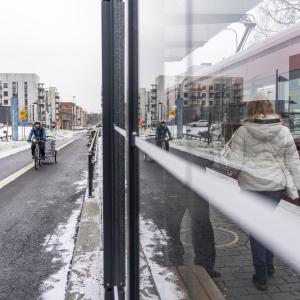The SUP Directive reduces the environmental impact of SUP products, i.e. single-use plastic products. In addition to cigarette butts, SUP products include single-serving containers and wrappers for ready-to-eat food, beverage containers of up to three litres, drink cups, lightweight carrier bags, pre-moistened wet wipes, balloons and fishing products containing plastic.
While all SUP products are harmful if left in the wild, cigarette butts are a particular nuisance. For example, 60% of all litter collected from beaches is cigarette butts. They do not biodegrade, leaving behind microplastic particles.
Four billion cigarette butts belong in the trash, not in nature
As many as four billion cigarette butts end up in the Finnish environment every year, most of which cannot be cleaned up with current cleaning methods. Increasing the number of cigarette butts and educating consumers is the most effective way to reduce the number of butts that end up in the environment.
From the beginning of this year, the Waste Act requires municipalities to have one litter bin per 900 inhabitants, one per 600 inhabitants next year and one per 300 inhabitants from 2026. This year, the number of bins in Tampere will be increased to 430 and by the end of next year there should be at least 850, based on the current population.
Work will start in the spring. The number of bins will be increased throughout the summer and next year as regulations become stricter.
A cigarette butt is a different kind of trash
Not just any bin will do. Generic trash cans are not acceptable, but trash cans must be specially designed for cigarette butts. You already see them in common use. Most new butt bins are attached to the side of existing standard bins.
The number of litter bins defined by law only includes those that are in places open to the public. This does not include, for example, those belonging to buildings or public offices. Cigarette butt bins will be added for example at public transport stops, main urban thoroughfares, parks, squares, markets, pedestrian streets and harbours, where the most litter is found.
Producers of SUP products will have to reimburse municipalities for the actual costs of cleaning them up. In addition, municipalities receive a separate payment for their investment in litter from the Environment Agency, which in turn charges the tobacco producers.



